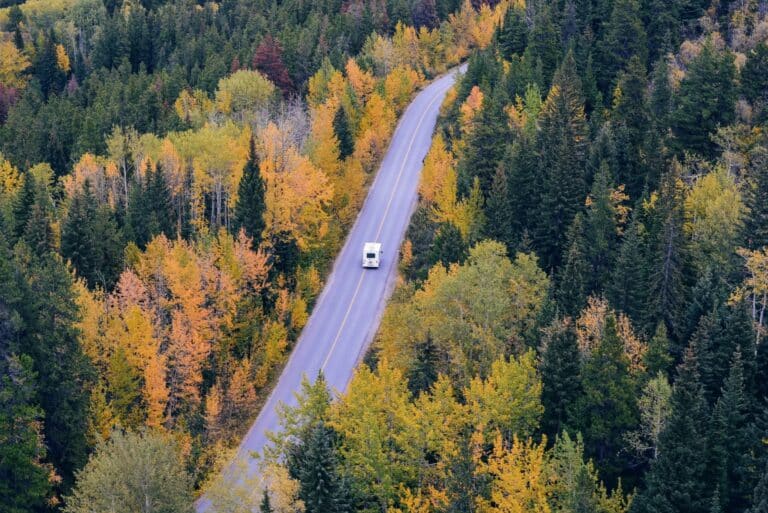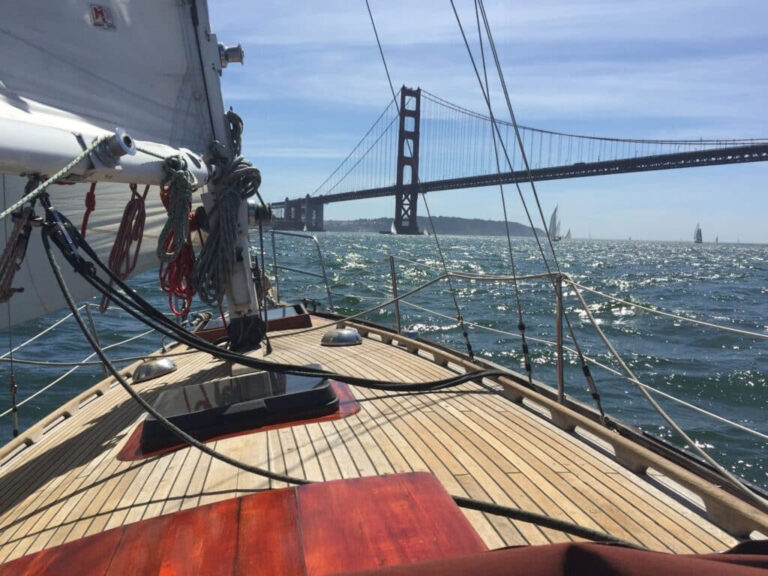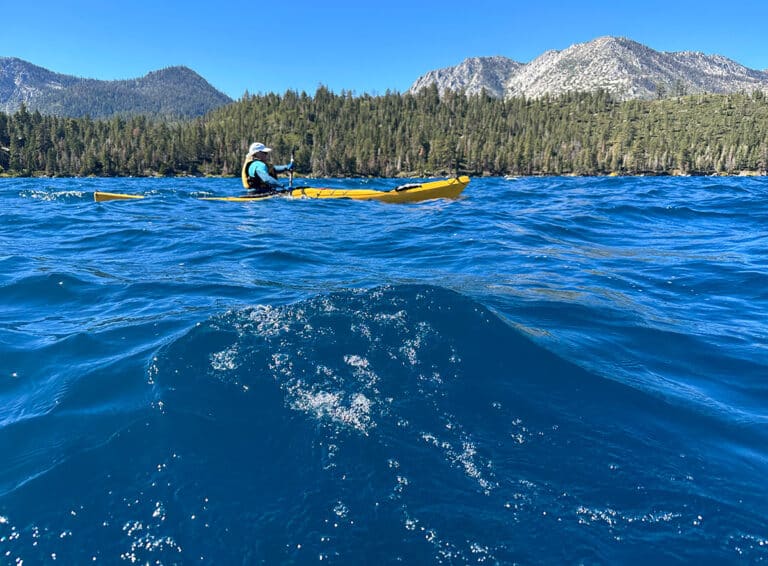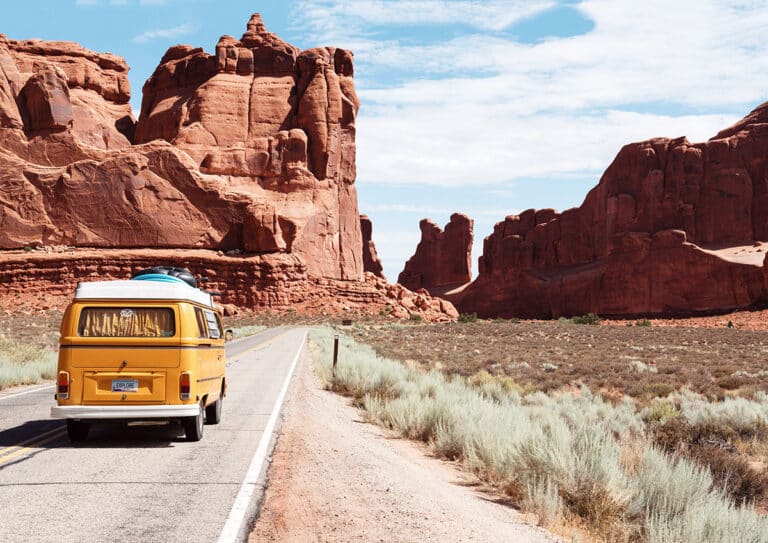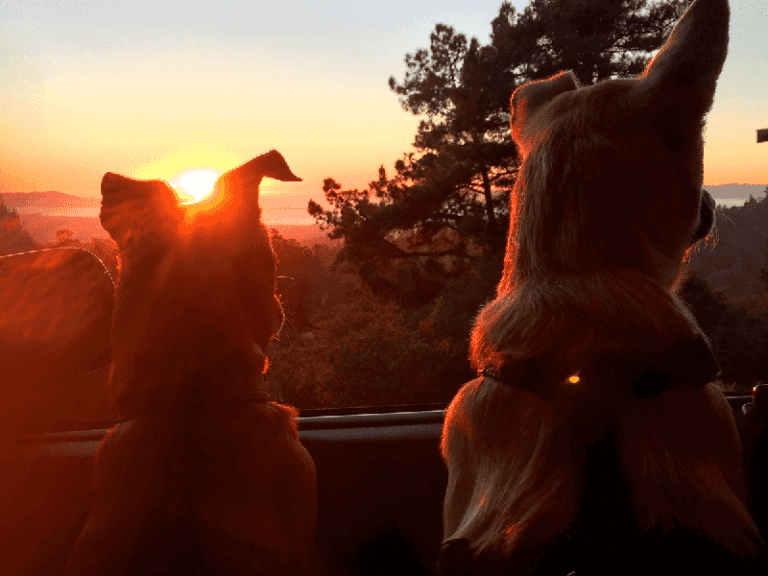Beyond National Parks: 32 Best RV & Camping Alternatives Across the U.S.
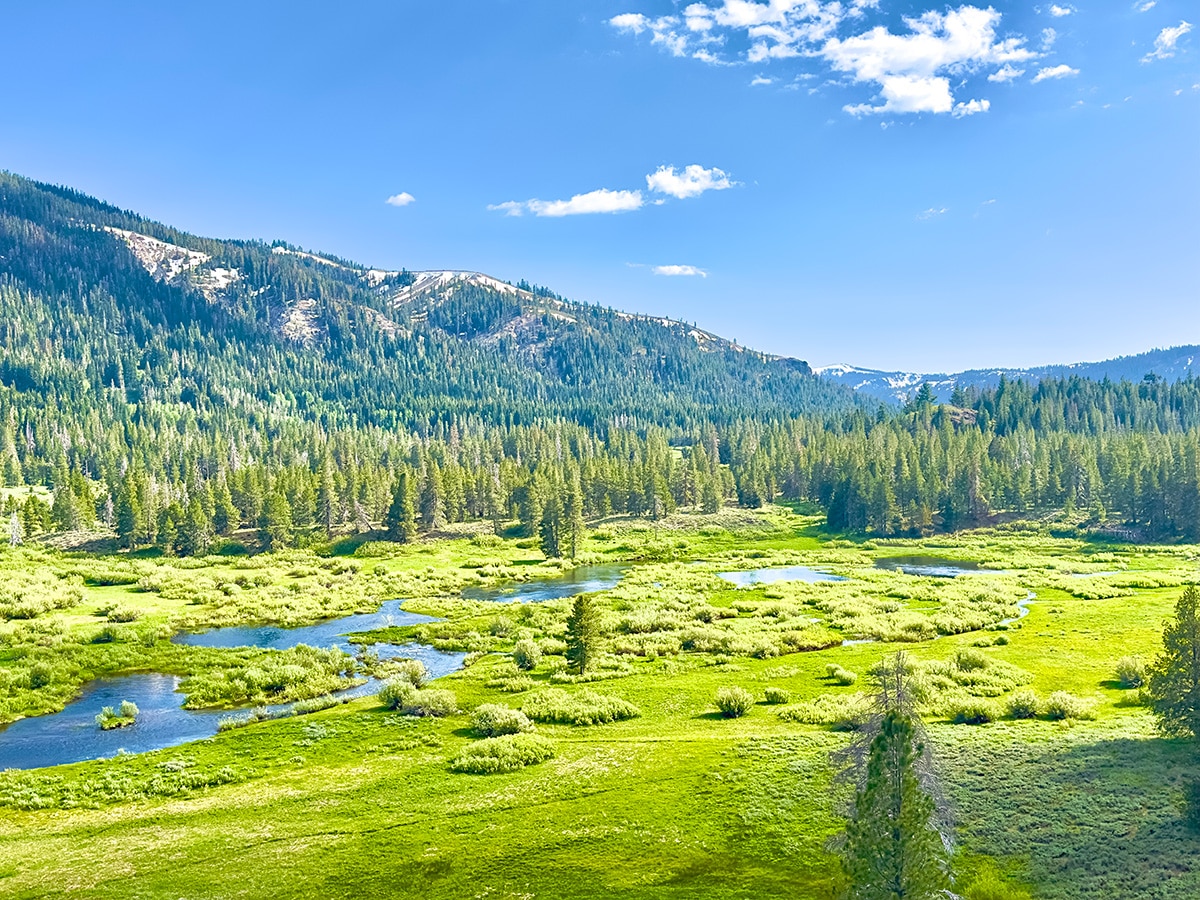
If you’ve been planning a fall RV trip, the news of a government shutdown and National Park closures may have you second-guessing your route. Campgrounds shuttered, visitor centers closed, and even locked gates can derail carefully planned itineraries. But here’s the good news: your adventure doesn’t have to end just because the parks are closed.
America’s public lands go far beyond its famous National Parks. From National Forests and BLM land to state parks, tribal lands, harvest hosts, and even quirky private campgrounds, there are still thousands of places where you can park your rig, pitch a tent, and soak up wild beauty without fighting crowds or hitting a “Closed” sign. In fact, some of these alternatives offer quieter trails, more affordable stays, and a chance to discover hidden gems that you might have otherwise driven past.
This guide highlights the best RV & camping alternatives to National Parks while the parks are off-limits — and shows you how to plan a “parkless” road trip that’s just as rewarding.
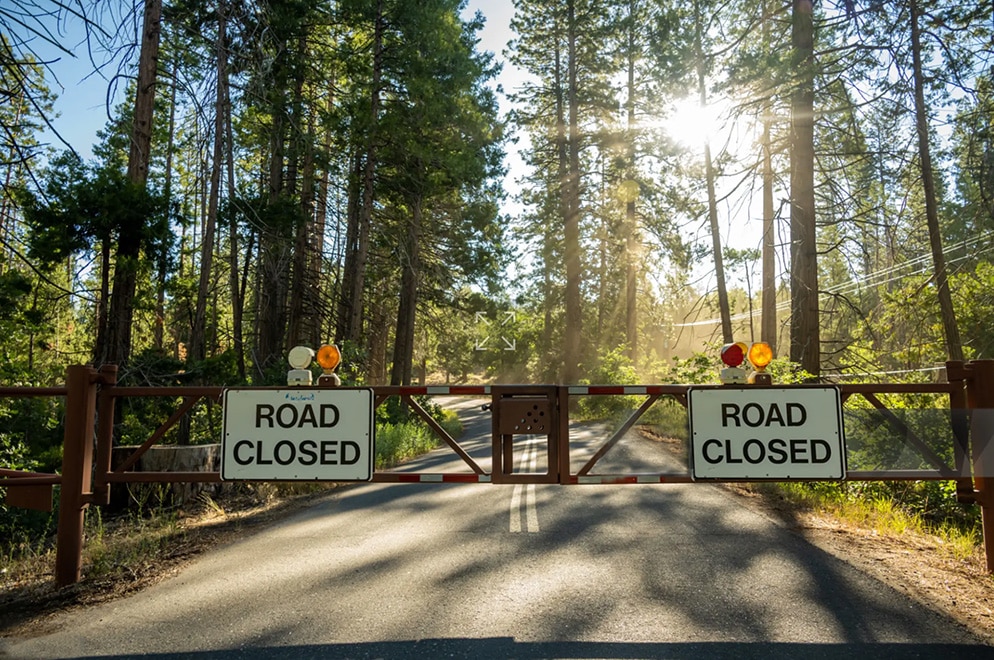
If you purchase through our partner links, we get paid for the referral at no additional cost to you! For more information, visit my disclosure page.
Types of Alternative Lands & Camping Options
National Forests and Grasslands
When National Parks close, America’s other public lands often stay open — and in many ways, they’re just as rewarding. National Forests and Grasslands cover millions of acres across the country, offering everything from shaded developed campgrounds to dispersed roadside boondocking. They’re usually less crowded than nearby parks, with a broader range of camping styles and lower fees. Find a National Grassland.
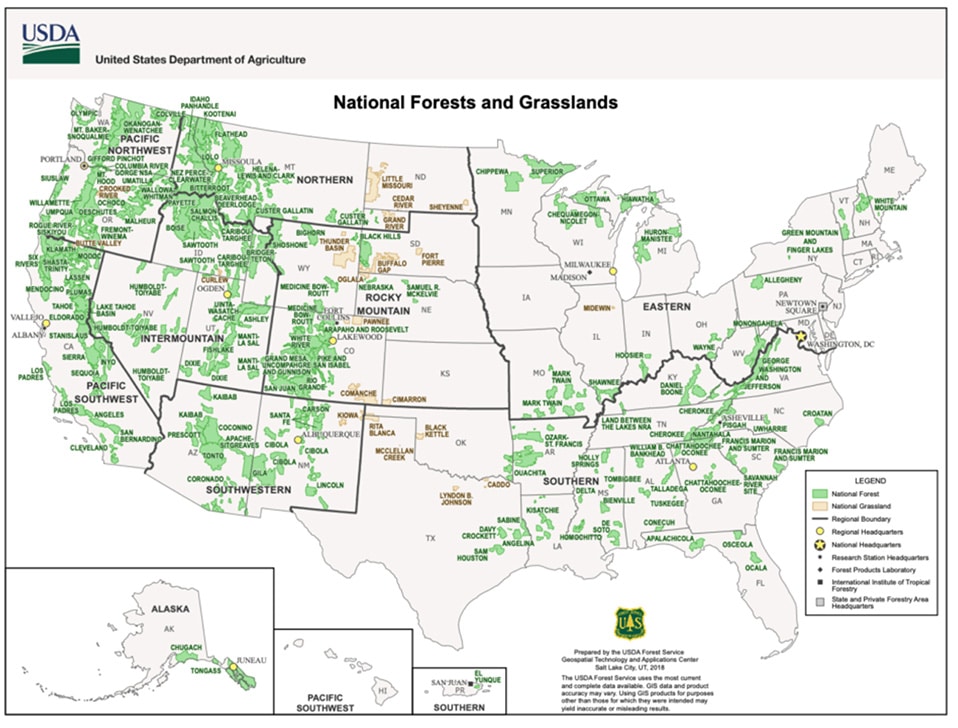
Bureau of Land Management (BLM)
For RVers who crave wide-open spaces, Bureau of Land Management (BLM) lands are a boondocker’s dream. Common in the West and Southwest, BLM regions allow dispersed camping with few amenities — perfect if you’re self-contained and comfortable off-grid. Picture waking up to desert sunrises or canyon views, with no neighbors in sight.
State Parks and State Forests
State Parks and State Forests are another strong option. Because state agencies manage them, they’re not affected by federal shutdowns. Many have well-maintained campgrounds with hookups, showers, and reservation systems, making them excellent alternatives for families or part-time RVers who like a few more comforts.
Wildlife Management Areas and Tribal Lands
Don’t overlook Wildlife Management Areas, tribal lands, and local parks, either. While you’ll need to check local rules and sometimes permits, these areas can be hidden gems — quiet campgrounds near lakes, rivers, or cultural landmarks that most travelers miss.
Tribal RV Parks in California. Tribally owned RV parks, both at Indian casinos and standalone, are among the nicest in the country. There are 69 standalone RV parks across 21 states, none of which are affiliated with casinos.
Meeks Bay Resort: The Washoe Tribe of Nevada and California operates the Meeks Bay Resort on the Western coast of Lake Tahoe. Many consider it the most beautiful location on the famously beautiful lake.
Unique Camping Experiences
And finally, there are private campgrounds with character. Think farms that welcome RVers through Harvest Hosts, HipCamps, vineyard stays, rustic ranches, or boutique glamping sites. These offer unique experiences (and often full hookups) while still giving you access to nearby trails and outdoor adventures.
Together, these alternatives not only fill the gap when National Parks are closed — they expand your camping map, opening doors to new landscapes, local communities, and off-grid discovery.
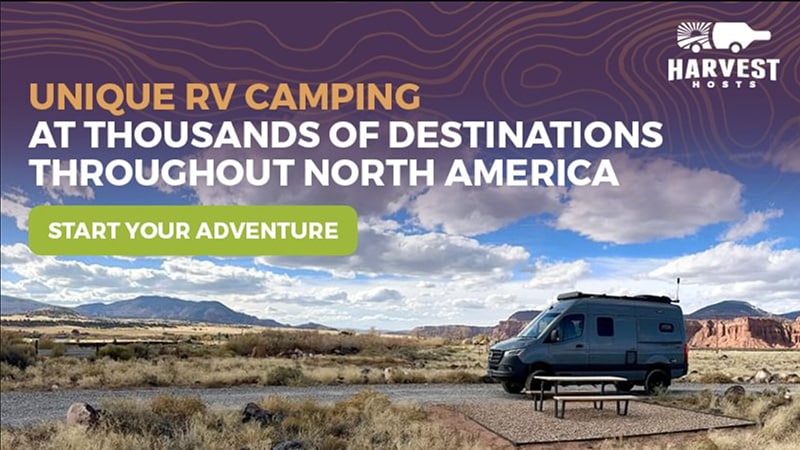
32 Best Public-Land Options for Campgrounds & Dispersed (Free) Camping
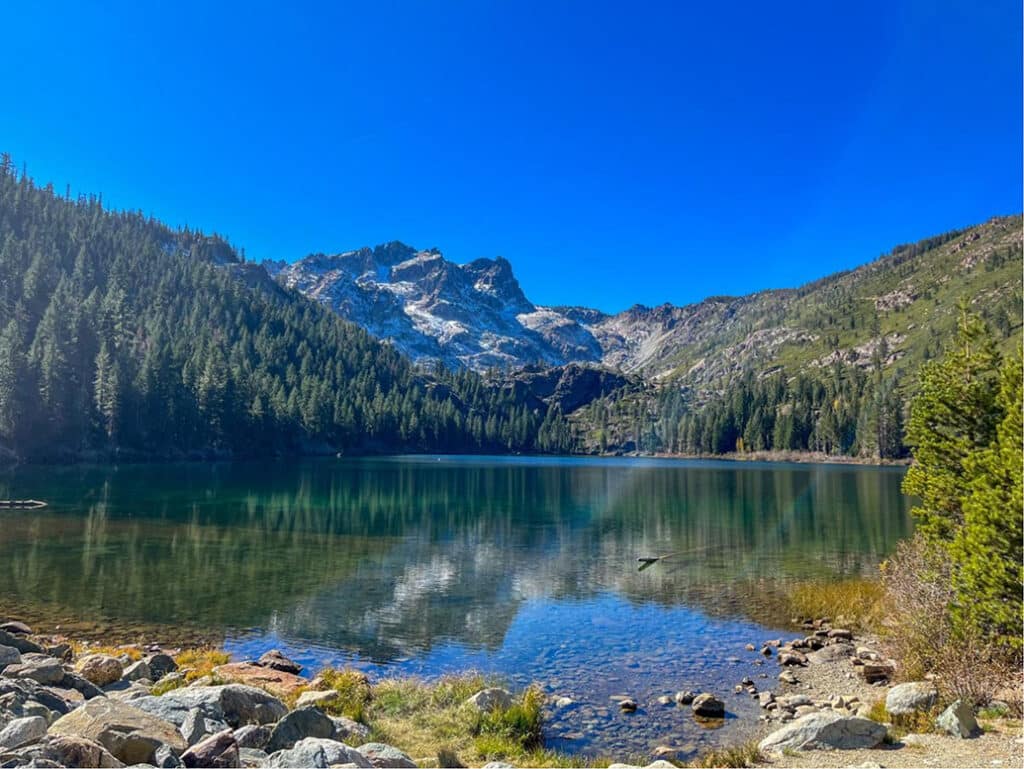
1. Sierra Nevada / California
- Inyo National Forest (CA) & Alabama Hills (BLM) — Dispersed camping along forest roads and creekside sites near Mammoth and the Owens Valley. It’s less crowded than nearby park areas, yet still offers access to alpine scenery. Check out National Forest camping options in thousands of U.S. forests.
- Sierra National Forest / Sierra foothills — Close to Yosemite but with fewer crowds. Bass Lake, dispersed roads, and lower-elevation spots offer nice alternatives to the park’s closures.
- The Stanislaus National Forest, established on February 22, 1897, is one of the oldest national forests. It is named for the Stanislaus River, whose headwaters rise within Forest boundaries. In the Stanislaus National Forest, you’ll find a treasure chest of recreation activities, including water activities, fishing in over 800 miles of rivers and streams, camping, and hiking.
- Tahoe National Forest: features multiple developed campgrounds and dispersed pullouts near Sonora Pass, as well as along the Hwy 108/80 corridors. The Tahoe National Forest straddles the crest of the Sierra Nevada Mountains in northern California, encompassing a vast territory from the golden foothills on the western slope to the high peaks of the Sierra crest.
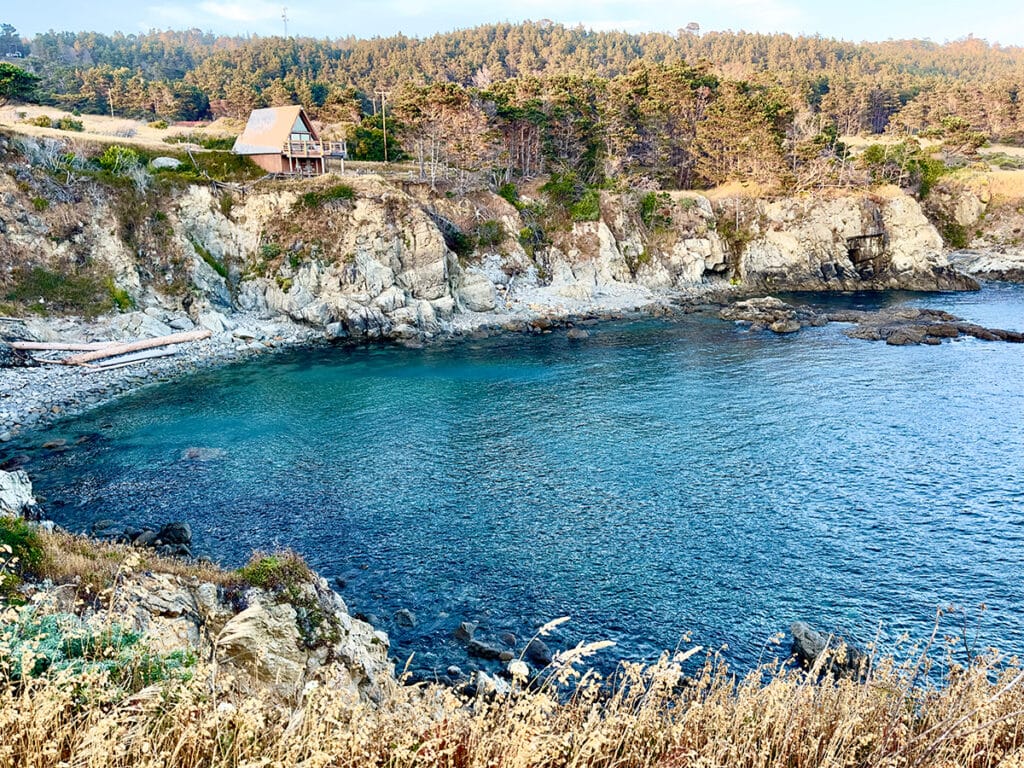
2. Northern California
- Mendocino National Forest is located in the Coastal Mountain Range in northwestern California and comprises almost a million acres. It is the only national forest in California without a major paved road entering it.
- Salt Point State Park is one of my favorite camping areas along the Sonoma Coastline of Highway 1. Rocky promontories, panoramic views, kelp-dotted coves, and the dramatic sounds of pounding surf; open grasslands, forested hills, pristine prairies, and pygmy forests – experience these coastal wonders at Salt Point State Park. With 20+ miles of hiking trails, over six miles of rugged coastline, and an underwater park.
- Los Padres National Forest: It’s a coastal range above Big Sur & Santa Barbara, featuring rough roads and epic sunsets. One of the largest in California, this national forest is also the only one in California that includes coastline. It covers 1.75 million acres
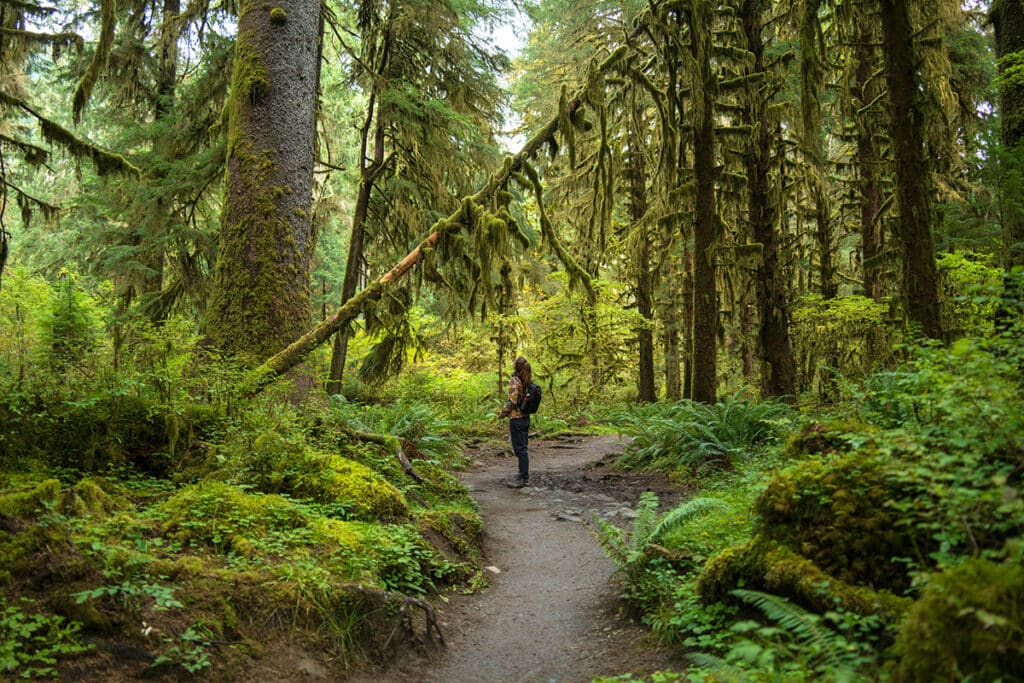
3. Pacific Northwest
Washington
- Olympic National Forest is part of an emerald paradise on the Olympic Peninsula. The Peninsula features more than 2 million acres of public federal lands. There are also 20 campgrounds, as well as three cabins that you can rent for the night.
- Okanogan–Wenatchee National Forest: On the East slope of the Cascades, it has a wide variety of dispersed pullouts.
- Mt. Baker–Snoqualmie National Forest in Washington State extends more than 140 miles along the western slopes of the Cascade Mountains from the Canadian border to the northern boundary of Mt. Rainier National Park. The forest also includes eight Wilderness Areas.
- Colville National Forest has wild huckleberries, camping, almost 500 miles of hiking trails, OHV trails, mountain biking, horse trails, lakes, rivers, and streams. The forest is also home to a diverse array of exciting wildlife, including moose, grizzly and black bears, cougars, bald eagles, elk, white-tailed deer, and a large number of wild turkeys.
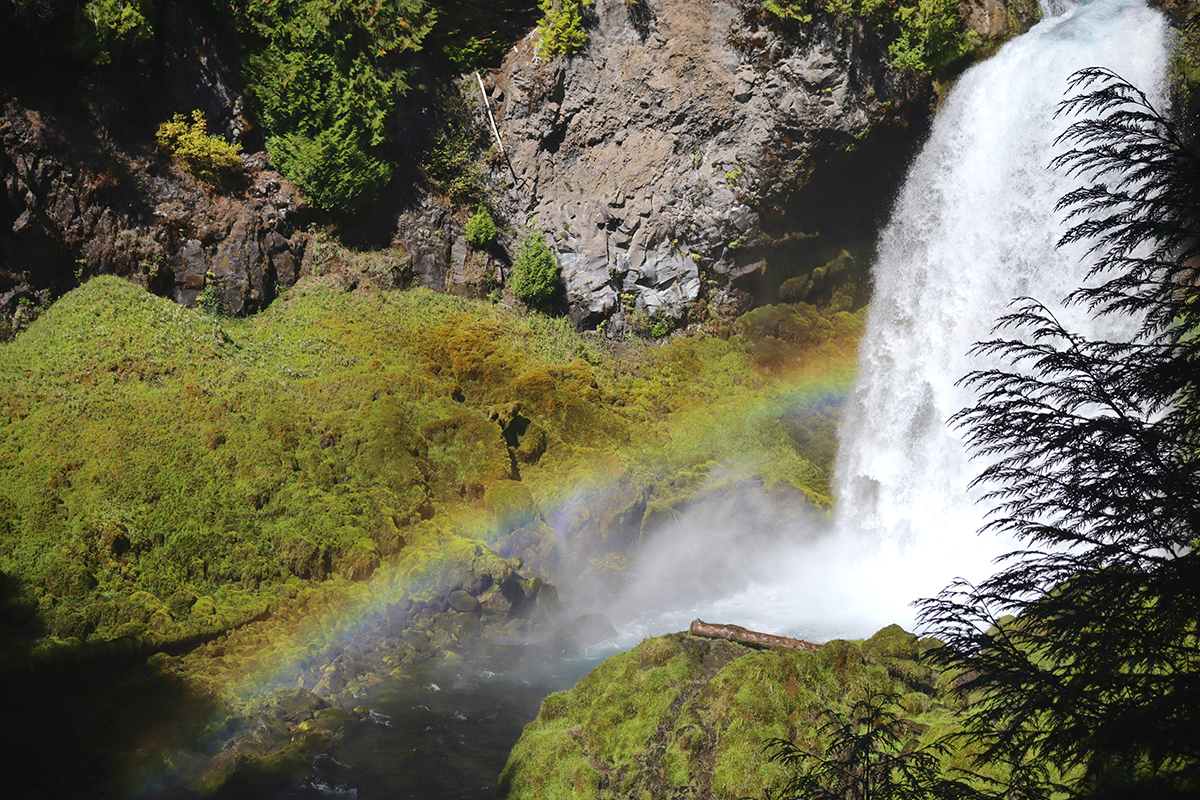
Oregon
- Umpqua National Forest & Willamette National Forest are renowned among campers for their riverfront sites, waterfalls, hot springs, and roughly 350 miles of scenic hiking trails. Users often mention it in “best national forests” lists.
- Deschutes National Forest is nestled along the Cascade Mountains. There are more than 125 developed and listed campgrounds on the Deschutes and Ochoco National Forests, ranging from small, primitive campgrounds with a few campsites to large, well-developed campgrounds with over 100 campsites.
- Siuslaw National Forest The Pacific Coast Scenic Byway Highway 101 runs parallel along the west side of the Forest and the Pacific Ocean.
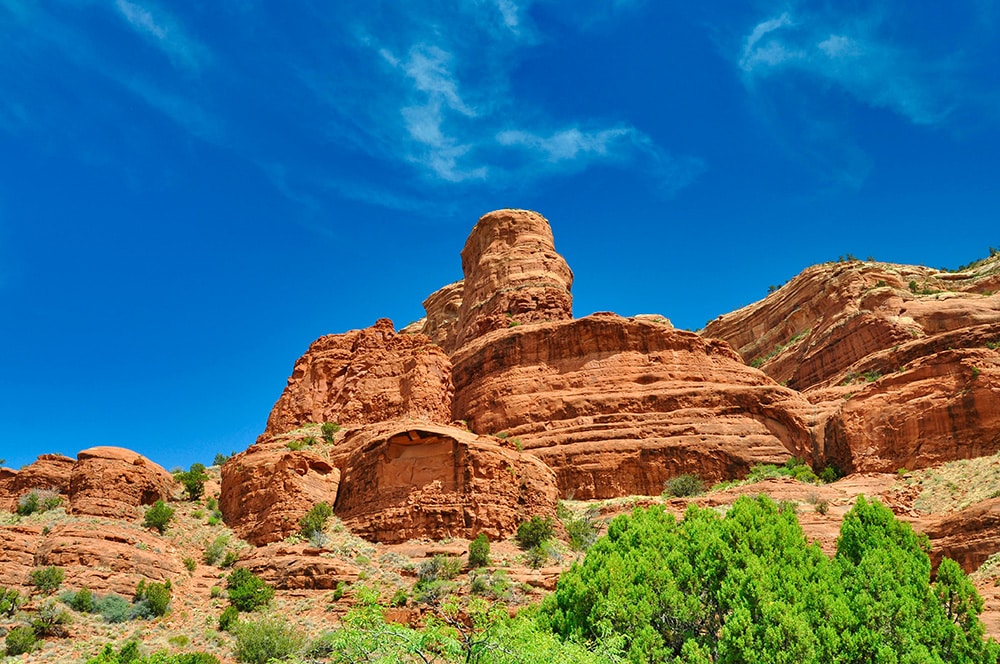
4. Southwest / Desert States
- BLM Lands in Arizona & Utah — The Southwest is rich with BLM-managed lands. You’ll find both developed and dispersed camping across multi-state BLM regions. Check out the Roadtrippers Guide to BLM Lands.
- Coconino National Forest (AZ) — Surrounding Sedona and Flagstaff, it offers alternative high-desert campsites away from the park crowds. Free camping along forest roads is a common practice. Southwest of Sedona, check out free camping along Loy Butte Road and the surrounding area. It’s one of the most diverse National Forests in the country, offering a stunning variety of landscapes and experiences around every corner.
- Coronado National Forest, not far from the old western town of Bisbee, AZ, offers free camping with amenities such as toilets and garbage disposal. Miller Canyon and Forest Road 687 have dispersed sites, providing a more rugged experience north of Tombstone. There are some excellent hiking trails, too.
- El Malpais National Conservation Area, NM — El Malpais is located 80 miles west of Albuquerque. It features unique lava flows, stargazing opportunities, and serene sites within BLM conservation lands.
- Kaibab National Forest, UT. The magnificent 1.6 million-acre Kaibab Forest serves as nature’s grand entrance to the world-famous Grand Canyon, featuring ponderosa groves, rim country, and dispersed free camping spots.
- The Carson National Forest, located near Taos, New Mexico, offers camping, glamping, and RV parks.
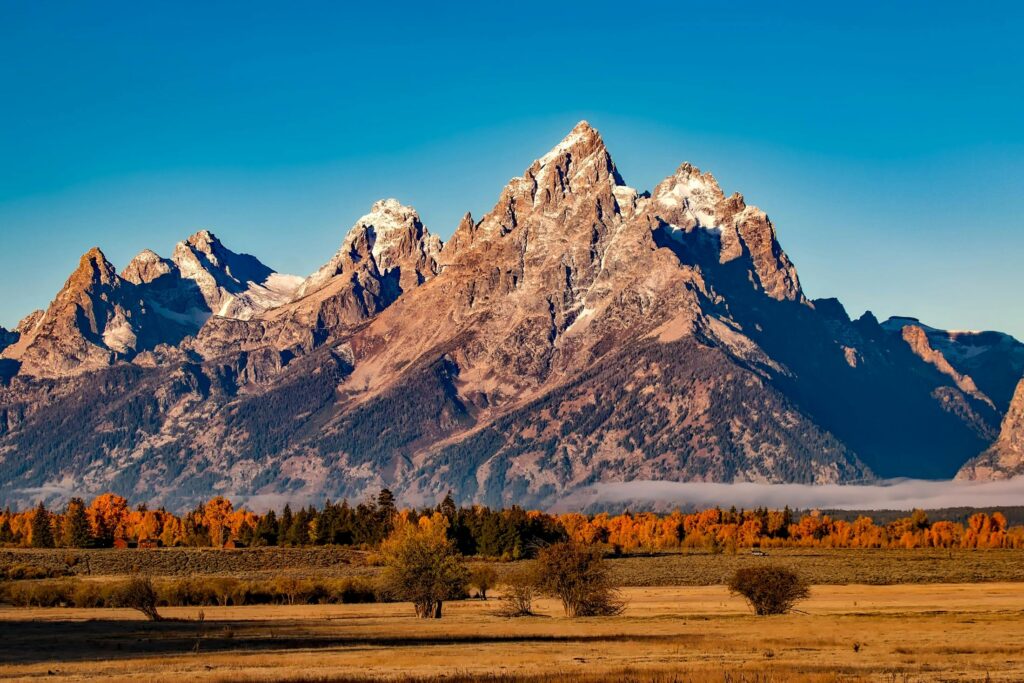
5. Rocky Mountains
- Bridger-Teton National Forest (WY / ID border region) — Offers hundreds of miles of forest roads, dispersed camping, and access to mountain terrain without needing to enter a national park.
- Sawtooth & Boise National Forests (ID): Alpine lakes and expansive vistas make it an excellent alternative when the Grand Teton and Yellowstone National Parks are busy.
- Flathead & Custer-Gallatin National Forests (MT): Gateway forests around Glacier and Bozeman, MT, with many dispersed RV camping options.
- San Juan National Forest (CO) (Durango/Silverton): Spanning 1.8 million acres across five Colorado counties, it offers high-elevation boondocking and abundant camping opportunities.
- The Arapaho & Roosevelt National Forests (CO) feature majestic mountains and vast expanses of grasslands, offering both reservable campgrounds and dispersed pullouts.
- Uinta–Wasatch–Cache National Forest (UT): Contains nearly 2.1 million acres of geological and ecologically diverse landscapes (including seven protected Designated Wilderness Areas). Cool temps, lakes, and mixed-use roads make it a great summer alternative to hot desert parks.
- Grand Staircase–Escalante (UT) (BLM) is among the most remote and rugged lands in Utah. Traveling along the All-American Road: Scenic Byway 12, you’ll find sun-drenched backcountry spreads out well beyond the visible horizon from the road.
6. Central & Eastern U.S.
- Ozark National Forest (Arkansas / Missouri area) — In the eastern U.S., where national park alternatives are rarer, this forest offers pretty woodlands, streams, and some lower-elevation dispersed sites.
- Shawnee National Forest, IL — Southern Illinois forests, glacial rock formations, and quiet forest roads full of camping.
- Wayne National Forest, OH — 160,000 acres in Southeast Ohio with forestlands complete with dispersed camp spots and few visitors.
- Allegheny National Forest, PA — in the Northern Appalachians, it is the only National Forest in Pennsylvania and has two National Wild and Scenic Rivers.
How to Plan a “Parkless” Road Trip
When National Parks or popular campgrounds close, a little preparation can open up an entire world of wild, beautiful, and often quieter public lands. Start with reliable mapping tools like onX, Gaia GPS, and Campendium, which help identify dispersed camping areas across BLM lands, National Forests, and state-managed recreation areas. Many of these apps also display cell coverage, elevation, and user reviews, making it easier to scout safe and scenic spots ahead of time.
Before you hit the road, check local rules and permits—some forest districts require free fire or camping permits, while others restrict vehicle access during fire season. Water and waste management become critical when you’re off-grid: carry extra jugs or invest in a portable water filter, and always pack out your trash. Composting toilets or sealable waste bags can make boondocking cleaner and more sustainable.
Finally, embrace flexibility. Remote lands can mean unpredictable road conditions, sudden weather changes, or fully booked campsites. Always have a Plan B (and C), and practice Leave No Trace principles: camp on durable surfaces, keep fires small and contained, and respect wildlife. A “parkless” road trip is not a consolation prize—it’s an opportunity to rediscover solitude, self-sufficiency, and the raw beauty of America’s public lands.
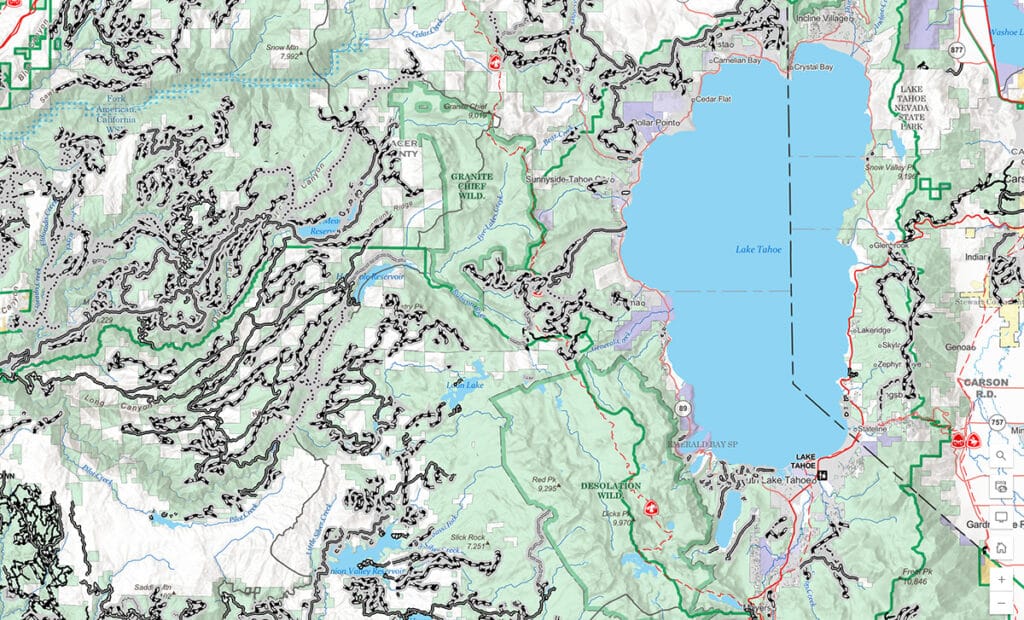
Tools: Maps and Apps
USFS Motor Vehicle Use Maps (MVUM)
The USFS Motor Vehicle Use Maps (MVUM) display National Forest System (NFS) routes (roads and trails) or areas designated as open to motorized travel. Routes not shown on the MVUM are not open to public motor vehicle travel. It will be the public’s responsibility to reference the MVUM to stay on designated routes for motor vehicle use.
The MVUM is a black-and-white map with no topographic features. It is a map showing the legal designations for where you can travel with various motorized vehicles. For additional reference, it is best used in conjunction with a Forest Service Base Map, Forest Visitor Map, or other detailed maps.
How to Google Search Maps in Your Area
- For US Forest Service Dispersed Camping in the Google Search bar, type: “site:fs.usda.gov dispersed camping [STATE/FOREST]”
- For BLM Dispersed Camping in search for: “site:blm.gov camping [STATE/AREA]”
- For State Parks Camping in search: “[STATE] state parks camping reservations”
Always verify seasonal closures, fire restrictions, road conditions, and stay limits before traveling. Practice Leave No Trace. Download offline maps (e.g., Gaia, Google Maps) and pack a backup water source; remember that cell service is often spotty or non-existent in remote areas.
What Makes These Camping Alternatives Worth It
One of the biggest perks of turning to National Forests, BLM lands, and state parks is the sense of space. Unlike National Parks, which often see traffic jams and crowded trailheads during peak seasons, these alternatives give you fewer neighbors and a lot more quiet. You can actually hear the wind in the pines, the water in a nearby creek, or the calls of wildlife without a line of cars in the background.
Another benefit is cost. Many Forest Service and BLM sites are free or come at just a fraction of the price of developed National Park campgrounds, for RVers, that adds up quickly — especially if you’re traveling for weeks at a time. If you’re comfortable with fewer amenities, dispersed camping can mean waking up to world-class views at zero cost.
These spots also carry a sense of discovery. Instead of pulling into a park where every viewpoint has been Instagrammed a thousand times, you stumble upon unexpected lakes, rock outcrops, wildflower meadows, or historic sites. It’s the kind of off-grid character that makes you feel like an explorer again — not just a visitor following the crowd.
Ultimately, alternatives provide you with more control and flexibility. If an area is full, you can pivot to another nearby forest road or campground. If you want to stay longer, many public lands allow extended stays with simple guidelines. That freedom to roam, adapt, and uncover hidden beauty is what makes these places truly special for RVers and campers alike.
And here’s the mindset shift: choosing these alternatives isn’t “settling” because the parks are closed. It’s about expanding the map of your adventure. Sometimes the most memorable trips happen when you turn down the less-traveled road and discover that quiet, overlooked corner of America that feels like it was waiting just for you.

